

















A Quick History of the Monarchs of England |
© Copyright by T.L. Winslow. All Rights Reserved. |
Last Update: Feb. 15, 2024. |

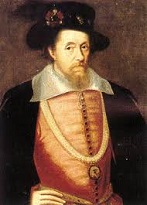







Every historyscoper should memorize the English monarchs, the white country that almost took over the world until white Germany got it in a death struggle and knocked it down a few pegs, leaving its white child Uncle Charles, er, Sam in charge. Why? Because it's one of the best documented not to mention most colorful lines of monarchs of Europe, forming a chronometer to give your memory palace some firm scaffolding, at least from the 1066 Norman Invasion of William the Conqueror on. So take five and learn them now. Put your notepads and pencils aside, this is the time to commit them to memory. And yes, you will be tested, nyuk nyuk.
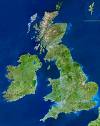

First a little historical intro. to the funky British Isles, the Wild Wild Wild Wild West of Europe, the last place to get civilization, and the one to make the weirdest brew with it. Until the Romans pulled out of the island in the early 400s C.E., England was an occupied country with no kings, and all kinds of wild Celts hiding out in the north and west and in Ireland, who then came down from their hiding places and partied hearty, only to see the pesky Germans who were disintegrating the Roman Empire invade and chase them back up. England was then carved up into seven petty German kingdoms, all pagan: the Saxons founded West Saxony, South Saxony, and East Saxony (AKA Wessex, Sussex and Essex) in the south, the Angles founded East Anglia, Mercia, and Northumbria in the middle and north, and the Jutes founded Kent, located on the filtered tip SE of England by the cigarette-white cliffs of Dover.


Both the Celts and Germans were pagan, and everything was peachy dandy for sacred oaks until the pope starting sending monks to convert the Germans, led by Augustine of Rome in 597, who quickly converted king Ethelbert and became the first archbishop of Canterbury (the burg of Kent). So modern lists of English monarchs usually start with Ethelbert. One little problem, Ethelbert died in 616, and his kingdom reverted to paganism, and it was a long dark tunnel, a long story, but Wessex slowly conquered the German kingdoms and Christianized them, starting with Egbert (Ecgberht) (Ecgbriht) (771-839), who became king of Wessex in 802 with Charlemagne's backing, the first good egg in England, which is why a lot of lists start with him instead, followed by his high-octane descendants, starting with his son Ethelwulf (Aethelwulf) (-858) (r. 839-858), then Ethelwulf's four sons (by Queen Osburh) Ethelbald (Aethelbald) (OE "noble people") (-860) (r. 858-860), Ethelbert (Aethelberht) (836-65) (r. 860-865), Ethelred (Aethelred) (OE "noble counsel") I (847-71) (r. 865-871), and Alfred (Aelfred) (OE "elf or wise counsellor") the Great (849-99) (r. 871-899).
But that is jumping ahead. Let's back up. By 802 England was down to three kingdoms (not counting North Wales and West Wales): Mercia (north), East Anglia (east) and Wessex (south), and Egbert took care of Mercia, conquering its chief town of London in 829, and his sons were just about ready to unify England when look who comes to dinner, the pesky Danes, who invaded in 865, took over NE England, and ended up sorely pressing and squeezing the Anglo-Saxons for decades.


After fighting off the pesky Danes and earning his title, Alfred the Great died in 899 as ruler of an all-Christian Team England, which became known as Saxon England, home of bodaceous blonde-blue babe Godgifu (Godiva) (1020-80), God's gift to mankind, who married dirty old man Earl Leofric of Mercia around 1030, er, 1032, er, 1035, and P-whipped him into founding a monastery at Canterbury and lowering taxes by riding around butt-naked, launching the story of Lady Godiva, which goes well with Godiva chocolates and bearskin rugs in front of ye olde fireplace. Let's see how it went. Oh yes, "Honey, stop overtaxing the people or I won't give you any tonight". "You'll give me what I want or I'll have my soldiers force you." "Okay, I'll make you a bet. If I ride around butt naked and none of the men look at me, will you lower the taxes then?" "Sure, honey, that's a sucker bet, you're a bodaceous babe and there's no way nobody will look." Well, nobody looked, except Peeping Tom the Tailor, but God struck him blind, so she won the bet, nyaa.


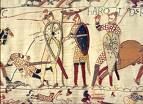
Godgifu was an old dried-up prune by the time that Duke William (actually Guillaume, since he spoke French and there was no English yet, just a German dialect called Old English) of Normandy crossed the English Channel and kicked the butt of Saxon King Harold II Godwinson (1022-66) at Hastings, then completed the Norman Conquest of England and became William I (OG "will-helmet", "resolute protection") the Conqueror (1027-87), the first Norman king of England in 1066, blowing his own horn in the Bayeux Tapestry, which he kept back in Normandy just in case. Many almanacs begin the list of English monarchs with him, as England owes its snobbish class society to the cruel bastard (literal not just figurative, the bastard son of Duke Robert the Devil), layered like a jello concoction, with the blue-blood Normans on top (Normans are really Norwegian Vikings who forced their way into France in 911, hence their pale skin doesn't tan and the blue veins show through), the ruddy German Saxons under their bootheels (usually acting as butlers), and the aboriginal Celts below that, usually treated like cavemen or Huns, beneath notice, made to dig coal and sell fish, with any Celtic blood in a high class Englishman studiously covered up behind their coat of arms. Back then women didn't want a tall dark and handsome man, they wanted a tall tanless pale man named Norman.



William I died in 1086, leaving three sons, known as the devil's brood (hatched from a she-devil?), Robert III Curthose (1053-1134) (eldest), William II Rufus (1057-1100) (known for his red beard - oops, ruddy complexion) (middle), and Henry I Beauclerc (1068-1135) (youngest), and William I made the meanest one, Rufus, his heir, giving Normandy to Robert, and no lands to Henry, which didn't phase him, as he proceeded to make use of his beauclercness (good clark or clerk, meaning he could read and write, and is therefore a doctor, able to prescribe medicine?) to get what's coming to him.
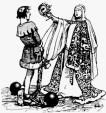
Meanwhile Rufus did his daddy proud by continuing his tradition of kicking the Anglo-Saxon dogs down until 1100, when Henry went on a hunting expedition with him, and, like the future LBJ did with JFK, lucked out when his buddy Sir Walter Tyrel accidentally on purpose shot an arrow in Rufus' eye, making Henry king, after which he pardoned him since it was a hunting accident by a lone archer and no conspiracy, yuk yuk. Henry I ruled until 1035, marrying his "brood of bastard" daughters out to other rulers to cement his power, after which he died without a male heir, leaving only his #1 daughter "Good Queen" Empress Matilda (Maud) (1102-67) (married to Geoffrey IV Le Bon Plantagenet, Count of Anjou, the French province that is always trying to conquer Normandy) the throne as regent for infant Henry II (b. 1033). Before dying, Henry I made his barons and bishps promise that they'd accept a woman on the throne, but as soon as he was stiff they er, forget it?


Too bad, the English were sexist, and soon the richest man in England, Stephen of Blois (1096-1154), grandson of William I split the kingdom as Stephen I, and until he died there was no clear winner, and it depended on whom you talked to. Maud was strong in western England and was able to hold as long as she wanted. She even kicked Stephen's butt and was officially crowned for a short time in 1141, but blew it and was deposed the same year, fighting on to make her young son king, which he insured by marrying rich manly woman Eleanor of Aquitaine, remember Christopher Atkins and Brooke Shields in the film "Blue Lagoon"?









Things were in limbo until Stephen died in 1154, when Maud's son Henry II Plantagenet (Fitzempress) (Curtmantle) (1133-89), who in 1152 married super rich manly woman Eleanor (Alienor) (Aliιnor) of Aquitaine (1122-1204) became undisputed heavyweight champeen and monarch of England, founding the Plantagenet (Angevin) Dynasty, named after the common broom (planta genista), known for its golden flowers. Things now settled down, and it became expansion time, conquering Ireland using his mean Norman soldier Richard FitzGilbert de Clare, 2nd Earl of Pembroke (AKA Strongbow) (1130-76), and kicking the Irish dogs down nicely like a good Norman should. He seemed to be heading for a golden retirement until he goofed up with his Norman layman buddy Thomas Becket (1118-70), getting him appointed archbishop of Canterbury, thinking he'd have him in his pocket against the pope and his hierarchy, only to watch him flop over, then getting pissed-off at not being able to control him, and getting him brained in the cathedral, staining his sterling rep., although he did try a coverup by claiming he didn't really mean it and doing penance, letting the pissed-off monks whip him and kissing Becket's you know what. He died in 1189 after fighting his own wife, Kate Hepburn, Eleanor of Aquitaine (in the winter?), leaving two feuding sons, Richard (OG "strong ruler", "powerful leader") I Coeur de Lion (the Lionhearted) (Lionheart) Plantagenet (1157-99) (eldest) (a Knight Templar), to whom he left England and Normandy, and John I Lackland (Softwsword) (1166-1216) (youngest), to whom he left no lands to rule, only some German marks, forever warping his personality - see any Robin Hood movie. Actually, Richard heard that daddy liked John best and was planning to change his mind, and harried the poor old fart to death after allying with his enemy Philip II Augustus of France to force him to give him what he wanted, but those were dark days, and that's how sausage was made back then. Eleanor of Aquitaine deserves honorable mention as the Mother of Women's Libbers, "The first woman in the history of civilized Europe to have the experience of choosing her husband, leading an army, going to war, and ruling over countries for considerable periods of time" (Thomas Cahill).

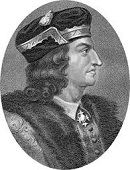
When Richard I got a crossbow dart in his eye in France in 1199 after having pardoned Robin Hood and his backstabbing bro' John, the latter usurped the throne from his nephew and designated heir Duke Arthur I of Brittany (1187-1203), starting a war, with Arthur backed by former kingmaker Philip II Augustus (1165-1223) of France, but since this was his 2nd go-around with the dude he figured him out and bought him off, then captured and killed Arthur in Rouen, Normandy in 1203.
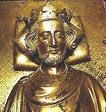
Too bad, John was such a vain selfish ass (see any Robin Hood movie) that he turned everybody against him, and ended up in a war with his own barons, who have long refused to fight his wars, causing him to tax them to pay for foreign mercenaries, meeting them in 1215 on Runnymead meadow east of London on the Thames River to parley with them, where they presented him with a charter of their liberties, no taxation without representation and all that rot, called the Magna Carta (Charta). Just like him, John soon reneged, starting the Barons War, and lost his baggage in the fens of Norfolk, when he suddenly died a week later of dysentery on Oct. 19, 1216, leaving his 9-y.-o. son Henry III (1207-72) as king. The rumor is that the monks thought that Evil King John Lackland was a werewolf, and slipped him a poison mushroom, then moved his bones from consecrated ground so he couldn't bite pious people, but those were dark times, go figure. English schoolchildren memorize the following rhyme for the English kings up to Henry III: "Willie Willie Henry (Harry) Stee, Henry (Harry) Dick John [slip me a mushroom] Henry Three".

The regents then turned the barons against their ally Prince Louis the Lion (1187-1226) (later Louis VIII) of France (son of Philip II Augustus), scaring them into believing he wanted to take over England, and after things settled down the Magna Carta was approved, beginning the English parliamentary system, at first with a House of Lords only, no French tennis courts in sight. Henry III ruled a long, long 54 years, kicking the Irish dogs down like a Norman king should until he became an old fart, while his super-stud son Prince Edward (known as Longshanks because he was taller than Wilt the Stilt compared to the shrimps back then) chafed at the bit, finally taking over de facto, and waiting for daddy to kick off. Too bad, daddy got in so much trouble financially that he tried to renege on his daddy John's promises to the barons, starting the 2nd Barons' War in 1264, and losing in 1265, causing the House of Commons to be created to watch over him with two eyes until he kicked off in 1272.



Prince Edward was leading the ninth and last losing Crusade in Syria in 1270 when the happy news arrived, and he left Jerusalem to the Muslims forever (until the Six-Day War of 1967) (he thought he was only signing a 10-year truce, but c'est la vie?) as he headed back to get his crown, although he took a couple of years to arrive, stopping in Gascony in SW France, home of the car-door-eared Basques. After being officially crowned Edward I (1239-1307) on Aug. 19, 1274, Longshanks went on to rule happy England (if you're Norman) for 35 long years (1272-1307), during which time he worked on his master plan to create an empire in the British Isles and France, first crushing pesky Wales in 1284, and making his gay son Edward Jr. (later Edward II) the first prince of Wales, only to lose his Spanish babe Eleanor of Castile (1241-90) (2nd cousin once removed through Henry II and Eleanor of Aquitaine) (the big blond king went for tarantula at night?) in Harby, Nottinghamshire, causing him to erect 12 chere reine ("dear queen") crosses at each spot her body rests on the way back to London, the best being Eleanor Charing Cross in Charing, Westminster, which later is used as the geographical center of London.


Longshanks then took on the pesky Scots, at first crushing them good, until they almost winked out. But just when things looked hopeless, a hero arose, Sir William Wallace (1272-1305), who taught the sons of Scotland that the stankin' English can be beat, developing new tactics for his outnumbered guerrilla freedom fighters and kicking their butts a time or two, until crafty Longshanks got him betrayed and hung-drawn-and-quartered in Aug. 1305, dying a contented monarch in 1307, the pesky Scots all-but dead and not buried yet, just a little mop-up and Scotland will be an English province where Norman lords kick the Scottish dogs down the way they know how.


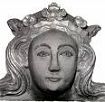


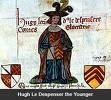
One little problemo, Longshanks' son Edward II (1284-1327), a well-known sodomite, married in 1308 to blonde-haired show-wife Isabella of France (1295-1358) (daughter of blonde-haired Philip IV the Fair (Le Bel) (1268-1314) of France) the supermodel of the century (her not him, er, scratch that?) the dick teaser and wet dream of all of Europe, who really got a raw deal and probably didn't get much if any from her lovin'-is-what-I-don't-got hubby. The 1995 film "Braveheart" has her hooking up with Mel Gibson, er, William Wallace, but actually she was only three years old when he was fighting his big Battle of Falkirk in 1298, and never even came to England until after he died, later in 1305, at age 10, too bad for her, maybe it was Robert the Bruce that did her? After getting crowned, her gay bud Ed-301 proceeded to fritter away Scotland to Robert the Bruce, who started out as a fence-sitter, sucking up to Longshanks in hopes of being appointed, er, crowned king in Baliol's place, then figured it out and fought for it, using dead Wallace as a real red-blooded hetero martyr to inspire and unite the Scots. Meanwhile Gay Ed preferred to spend his time in the gay baths with you're-cute-and-got-a-car Piers Gaveston, 1st Earl of Cornwall (1284-1312), his lord high commissioner (with a cute velvet tunic and medallion?), and, after Piers Plowman was killed in 1312, with his new indispensible LHC Hugh le Despenser the Younger (1286-1326) and his equally gay daddy Hugh le Double Bubble Despenser (the Elder) (1262-1326).



Meanwhile Isabelle had son Edward III (with the stable boy, or after getting hubby drunk?), and found a new beau in France named Roger Mortimer (1287-1330) (why does that remind me of mortadella?), and got her brother king Charles IV the Fair (1293-1328) of France to back them in a neo-Norman invasion, capturing Edward III and getting him imprisoned in 1326, then having him murdered with a hot poker up his ass in 1327, leaving Isabelle and Roger as regents for teenie Edward III (1312-77).
Too bad, the English people didn't know all the bad stuff about the Edwards, and loved them, and didn't want any Frogs running England, so Isabelle and Roger were skating on thin ice, and in 1330 Edward III reached the age of majority, put his mommy, the "she-wolf of England" out of the way, and had Roger executed, then went on to rule 47 years, until 1377, during which time he claimed the French throne and began the Hundred Years' War with France in 1337, which started out with a bang but got slowed down bigtime by the Black Death (Black Plague) of 1347-50, and lasted until 1453, the same year that Constantinople fell to the pesky Muslim Turks, setting the stage for Bond, James Bond to fly into town 500 years later and play For Russia With Love.








Actually, Edward III lived too long, got pussy-whipped by mistress Alice Perrers (1348-1400), and his kingdom pretty much taken over by his sons Edward the Black Prince, Earl of Chester and Duke of Cornwall (1330-76) (AKA Edward of Woodstock) and John of Gaunt (Ghent), Earl of Richmond and Duke of Lancaster (1340-99), until both Edwards died by 1377, leaving the Black Prince's son Richard II (1367-1400) as king. Too bad, he proved to be a royal ass under the thumb of his uncle John of Gaunt (who died in 1399), making people address him as "your majesty" for the first time in English history, whereupon R2D2 got in a war with Gaunt's son Henry Bolingbroke, who dethroned him and became Henry IV (1367-1413), then murdered him and Geoffrey Chaucer (1343-1400) in 1400, ending the Plantagenet Dynasty and founding the red rose Lancastrian Dynasty, which tangled in a half-century war with the white rose York Dynasty starting in 1430. (Just remember the White Peppermint Patty of York and the Bloody Red Rose of Lancaster). Chaucer was killed in his prime, but at least he left English a respectable language, and paved the way for Shakespeare 200 years later.




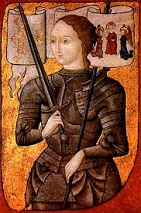
Henry IV died in 1413, and his redhaired son Prince Hal became Henry V (1387-1422), going on to Kiss Me Kate and marry French king Charles VI's daughter Catherine of Valois (1401-37) after kicking French butt in the Battle of Agincourt in 1415, then croaking in 1422 after being promised the throne of France, after which the French reneged because his son Henry VI (1421-71) was only 9 mo. old, and England plunged into near anarchy for 20 years, during which time Joan of Arc (1412-31) helped throw them out of France, until the Henry's half-uncles the old, er, Beauforts won. Hold on, the fight's not over. Henry VI went mad, allowing his wife Margaret of Anjou and uncle Richard Plantagenet, duke of York to vie for control, resulting in the 30-year Wars of the Roses (1455-85), which were at first won by the Yorkists in 1461, when Edward IV (1442-83) became king, with the Lancasters all-but exterminated, and only 14-year-old Henry Tudor, earl of Richmond left. Don't cry, he proved to be enough to reverse the charges.


After Henry VI made a brief comeback in 1470-1, only to lose the throne to Edward IV again, the latter died in 1483, leaving boy sons Edward V and Duke Richard of York under the charge of twisted, conniving huchbacked cripple the-wolf-nation-wants-you Duke Richard of Gloucester, who usurped the throne and had them done away with in the Bloody Tower the same year (Edward was officially king from Apr. 9 to June 25), becoming Richard III (1452-85). He's the kind of monarch everybody loves to hate, see Shakespeare.


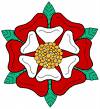
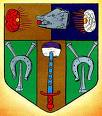
Sure enough, Henry Tudor gathered his forces and kicked his butt on Bosworth Field in 1485, becoming Henry VII (1457-1509), founding the Two-Door, er, Tudor Dynasty, and ending the War of the Roses at the same time by marrying Elizabeth of York (1466-1503), daughter of Edward IV, and combining the red Lancaster and white York roses in the red-white Tudor rose (looks suspiciously like a woman's you know what?) Things could go on like this forever, except two things. One, Christopher Columbus discovered the New World in 1492, and two, Martin Luther started the Protestant Reformation in 1517, aided by Johannes Gutenberg's 1439 printing press.







Make that three. Henry VII died in 1509, leaving his codpiece-wearing son Henry VIII (1491-1547) as king, who had a long reign marked by hearty partying, jousting in and out of bed and splitting with the pope so he could dump his first wife Catherine of Aragon (1485-1536) (widow of his elder brother Arthur) and try to produce a male heir, only to dryejac, er, go through five more wives for nothing (CAJACC - Catherine, Anne, Jane, Anne, Catherine, Catherine) (of Aragon, Boleyn, Seymour, of Cleves, Howard, Parr): Anne Boleyn (1507-37), Jane Seymour (1508-37), Anne of Cleves (1515-57), Catherine Howard (1521-42), Catherine Parr (1512-48).
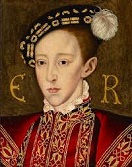
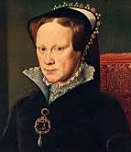




After all that butter churning, Henry VIII died in 1547, leaving hemophiliac 9-year-old son (son of Jane Seymour) Edward VI (1537-53) as king, who didn't last six years, dying in 1553 (after getting old enough to spank his monkey?) after naming his cousin Lady Jane Grey (1537-54) as his heir, but she only lasted 9 days (July 10-19), during which Henry VIII's daughter (by Catherine of Aragon) Mary Tudor regrouped and took over as "Bloody" Mary I (1516-58), trying to turn the clock back by burning every Protestant she could get, until she too croaked in 1558, leaving Henry VIII's bastard daughter (by Anne Boleyn) Elizabeth I (1533-1608), "the Virgin Queen" as queen monarch, allowing the Protestant leaders to return from exile and party, turning her into their virtual Madonna, meet me in window treatments.


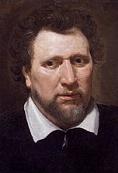


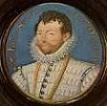
Elizabeth I became one of England's best monarchs, inaugurating the World-Is-Our-Oyster Elizabethan Age, with leading literary celebs William Shakespeare (1564-1616), Christopher "Kit" Marlowe (1564-93) (killed in a knife fight), and Ben Jonson (1572-1637) (bent what?), and soldier celebs Sir Walter Raleigh (1552-1618) and circumnavigator Sir Francis Drake (1543-96), who defeated the Spanish Armada in 1588 and made England safe for Protestantism, and the world an open road for English imperialism, complete with dual Bibles (the King James Bible for Sundays, and Shakespeare for the other six days), along with the world's most complicated and messed up language, which is purposely designed to reveal one's class because it takes so many years of expensive schooling to learn to speak the King's English, everybody else having to settle with inferior giveaway accents and vocabularies. Too bad, just when the Tudors were on top of the world, and being Welsh, could claim they are the heirs of fabled King Arthur too, Liz dies without marrying or producing even an illegitimate heir, obviously taking her Virgin Tour a little too seriously (it's okay to sit on the throne as long as I got balls and lead face powder, so don't mess it up?). When you think about it you could see it coming, since her daddy married babe after babe for nothing, so she probably thought "Why waste my time, call empire today, 1-800-555-STUART?"

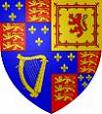
Elizabeth I died in 1603, leaving Scottish king James VI, son of Bloody Mary's daughter Mary Stuart, Queen of Scots to move on in and become king James I (1566-1625) of England, founding the Stuart Dynasty in England, and inagurating the Bible-loving Jacobean Age, during which his new poetic King James Bible translation of 1611 backfired by creating a generation of dour Bible-thumping Puritans who ended up conspiring to overthrow the Anglican Church and shut down the theaters, where they considered Shakespeare a corrupting influence and rival, from baby to big boy, all in one toy, that's not an elevator that's a chimney, ahahahahaha, when actually their Bibles were full of enough sex and violence to shut them up if they'd admit it.



Write this down. James I died in 1625, leaving his son Charles I (1600-49) in charge. Too bad, the Puritans don't get mad they get even, and after years of shenanigans, the Puritan-run Rump Parliament (named after the non-Puritans were expelled) started the English Civil War (1641-9) with him, where the long-tressed royalist Cavaliers took on the butch Roundheads, who won, and gave him a headless haircut in 1649, creating the No Doubt Commonwealth, run by the glorious stefani council of state until 1653, when Oliver Cromwell (1599-1658) did the basics in less than a minute and dissolved Parliament and became Lord Protector, refusing a crown since it's not Biblical, turning England into a mirthless place with Bible police running around making sure people didn't enjoy themselves on Sunday, and confiscating copies of Shakespeare. His dog was only allowed to live at the south end of the mobile home park, near the swamp?





Lucky for England, Cromwell croaked in 1658, and his son Richard Cromwell (1626-1712) took a shot, but couldn't keep the Puritan ship going, getting kicked downstairs in 1659 as Parliament invited Charles I's exiled poontang-loving son Charles II (1630-85) back to become king in 1660, what they call the English Restoration, holding England together through the Big 666 and the geek years of Sir Sir Isaac Newton (1642-1727) until he died in 1685, upon which his son James Stuart, Duke of York became king James II (1633-1701), whose followers were the original Tories, destabilizing the monarchy again because he was a bit too friendly with the hemoglobin-intolerant Catholics, resulting in the bloodless Hand-That-Rocks-The-Cradle Glorious Revolution in 1688 after Parliament invited PC William of Orange (Netherlands) and his wife Mary of Orange to peel and moved in and became William III (1650-1702) and Mary II (1662-94), while James II unceremonially skooted to France, starting the perennial Jacobite cause to film Apple-Mac commercials.
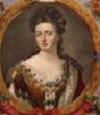


The William and Mary era was pretty good for England, because Science was free to thrive, and the Universe to be materialistically conquered in their studies. Too bad, William and Mary produced no male heir, and in 1694 Mary croaked, followed by William in 1702, causing his cousin Anne Stuart to become queen Anne I (1665-1714), while wannabe James III, Prince James Francis Edward Stuart the Old Pretender (1688-1766), son of James II waited in the wings, keeping the pipe-dream Jacobite movement alive trying to put first him then his son Bonnie Prince Charlie (Charles Edward Stuart) the Young Pretender (1720-88) on the throne of England or Scotland, whatever they could get, which was always nothing, one pill, once a day.


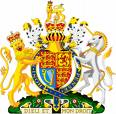
Queen Anne died childless in 1714, ending the Stuart dynasty, and by now the royal family of Europe had become an inbred international thing, so they invited in German-speaking (no English) George I (1660-1727) of Hanover, great-grandson of James I, who founded the Hanoverian Dynasty in England, which rules to the present day, albeit after a couple of name changes, some mosquitoes from abandoned pools still test positive for the Nile Virus.


In 1727 George I died 10 weeks after Sir Isaac Newton (June 11 vs. Mar. 31), and his German-born son George II (1683-1760) became king, dying in 1760 and leaving the throne to legend-in-his-own-mind Mad King George III (1738-1820), who stunk up the monarchy for 60 long years, living through the loss of the American colonies, the French Revolution, and Napoleon, dying deaf, dumb, and blind in 1820 looking like King Lear, while Parliament completely took over, making the monarchy more and more a status symbol, window dressing, with no real power.


On Jan. 29, 1820 George III's fat idle foppish art-collecting son George IV (1762-1830), long known as the Prince of Whales became king, stinking the kingdom up even worse, until he croaked in his chowder on June 26, 1830, leaving the kingdom to his brother William IV (1756-1837), "the Sailor King", who dumped the Tories for the Whigs (believers in limits on royal power), and died on June 20, 1837, leaving the throne to his half-English half-German niece Victoria, who inaugurated the long long Victorian Age, during which Britain became the empire on which the sun never sets, coming close to ruling the world with its White is Right But We Feel Guilty About Our White Man's Burden philosophy. Somebody else cooked it, served it, and did the dishes, so I loved it? Welcome to the Sunday replay.
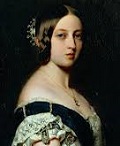



On June 20, 1837 Queen Victoria (1819-1901) became the 4th female English monarch (until Jan. 22, 1901) (or 5th or 6th, depending on whether you accept Maud and Lady Jane Grey), and although she started out a lively party-going young babe who smoked Virginia Slims and played tennis (just kidding), her problem is she went for her first cousin Prince Albert of Saxe-Coburg and Gotha (1819-61) a little too much, and got dick-whipped, so when he croaked in 1861 during the U.S. Civil War, she freaked and turned overnight into a fat sexless 50-in.-waist grandmother type who always wore black dowdy mourning, a super prude who never let anybody have any immorality going on in her kingdom, not even naughty thoughts, keep your hands where I can see them, like that, what did you do to your penis? Never mind her little fling with Scottish gillie and personal servant John Brown (1826-83), nobody can prove it in court. Meanwhile George III's little mistake of the U.S. was cranking up, becoming the New Kid on the Block, and going through the Gay Nineties, while Germany was also ramping up, building up its navy to take Britain on and create a worldwide White Is Right And We're Not Guilty One Bit About It empire, which ended up spawning the two horrible world wars of 1914 and 1939, forever proving that the west side of Europe is the good side, and central Europe is its butthole.

When Victoria finally passed on Jan. 22, 1901, her Francophile eldest son was crowned Edward VII (1841-1910), letting men smoke their cigars in Buckingham Palace again, and changing the royal dynasty from Hanover to Saxe-Coburg, not that anybody cared, they were so afraid of the new German menace, and Edward had the wrong bloodlines and surname anyway, so keep your upper lip stiff and pass the humidor.


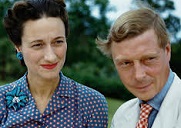
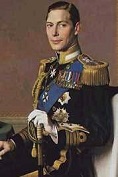





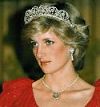

Edward VII turned out okay, becoming known as the Peacemaker for stalling the inevitable world war, and died on May 6, 1910, and his second, rather limited son became George V (1865-1936), prudently changing the name of the royal house to English-sounding Winslow, er, Windsor in 1917, and keeping scandal out of the royal family until Jan. 20, 1936, when his oversexed dandy son Edward Windsor (inventor of the Windsor tie) became king Edward VIII (1894-1972), soon stinking up the kingdom with his support for Nazism and sexual hangups with Baltimore don't-say-gay divorcee Wallis Warfield Simpson (1896-1986), causing him to abdicate the same year in favor of his brother Duke Albert of York, who became George VI (Albert Frederick Arthur George) (1895-1952), not really wanting the job, but keeping the stiff but stuttering British upper lip and presiding over Britain's bad WWII years, then prematurely dying on Feb. 6, 1952 at age 57, leaving his groomed-from-birth perfect kid Elizabeth II (Elizabeth Alexandra Mary) (1926-2022) as queen monarch, who goes on to stay perfect and keep her Greek-born hubby Prince Philip (Philippos) Mountbatten, Duke of Edinburgh, Earl of Merioneth, and Baron Greenwich (1921-2021) from being king even as her royal family creates scandal after scandal, the worst being her funny-eared waiting-in-the-wings eldest son Prince Charles of Wales (Charles Philip Arthur George) (1948-), who has a Cinderella wedding with English blueblood babe Lady Diana Spencer (1961-97), and is apparently about to live happily forever with her as king and queen of Britain, only to get caught fooling around with "the Rottweiler" Camilla Parker Bowles (1947-) and get divorced, after which Princess Di is killed in a suspicious auto accident in Paris, causing some to point fingers at Prince Philip. All the while his mommy Queen Liz is obviously thinking he's not king material, and therefore is trying to live as long as she can in hopes of somebody better coming along, such as you'll-stop-traffic Princess Diana's sons princess, er, Prince William Arthur Philip Louis Mountbatten-Windsor of Wales, Duke of Cambridge (1982-) and Prince Henry "Harry" Charles Albert David Mountbatten-Windsor of Wales (1984-), who have more pure certified English blueblood than anybody in her German-based dynasty - stay tuned for William V and/or Henry IX. Too bad, on Sept. 8, 2022 73-y.-o. Charles III succeeds to the British throne, with Camilla as queen consort. The British Empire, which Elizabeth II struggled to hold together, now comes apart?
Audience, are you ready to play Millionaire? Let's play Millionaire. The highway is jammed with broken historyscopers on a last chance power drive. Let's try a quick test to see if your minds are right. See how many times it takes to spew out the List of English monarchs and reign dates without mistakes, then check back with me and we'll go see Ferris Bueller's Day Off. (Note: In trivia contests they want you to know that Stephen, John, Anne and Victoria are the only monarchs without numbers, because one is a lonely number, and Maud is usually suppressed from the list because her thing isn't long enough, and let's not even mention Lady Jane Grey?) Did I mention Mnemonic verses of monarchs in England?
Willie Willie Henry [Maud] Stee, Henry Dick John Henry Three, then Mister Ed One Two and Three (or 1-2-3 Neds): William I (10661087) (21 years) William II (10871100) (13 years) Henry I (11001135) (35 years) Maud [I] (1135-54, or 1141, or not at all, your choice) Stephen [I] (11351154) (19 years) Henry II (11541189) (35 years) Richard I (11891199) (10 years) John [I] (11991216) (17 years) Henry III (12161272) (54 friggin' years) Edward I (12721307) (35 friggin' more years) Edward II (13071327) (20 years) Edward III (13271377) (50 years) (a hundred years of Mister Eds, plus a Hundred Year War as a parting gift) Dick Two (the Bad) Henry Four Five Six, Ed Four Five, Humpback Dick Three, then Henry Seven and Henry Eight, shooting blanks in six wives, then leaky Ed Six and 9-Day Lady Jane Grey: Richard II (13771399) (22 years) Henry IV (13991413) (14 years) Henry V (14131422) (9 years) Henry VI (1422-1461, 14701471) (39 + 1 years) Edward IV (14611470, 14711483) (9 + 12 years) Edward V (9 April25 June 1483) Richard III (14831485) (2 years) Henry VII (14851509) (24 years) Henry VIII (15091547) (38 years) Edward VI (15471553) (6 years) Lady Jane Grey (July 10-19, 1553) (9 days) Bloody Mary Liz (Bessie) Jim (James the Vain) Charlie One, then Charlie Two, Jim Two, Dutch Willie Three and Mary Two, Anne (Anna Gloria), then German George One through Four, Willie Four, Vicky, Ed Seven, George Five, Ed Eight, George Six, Liz Two, then Who Who Who (anybody but funny ears): Mary I (15531558) (5 years) Elizabeth I (15581603) (45 years) James I (16031625) (22 years) Charles I (16251649) (24 years then chop chop chop) The Commonwealth (1649-60) (11 years) Charles II (16601685) (25 years) James II (16851688) (3 years) William III and Mary II (16891702, 16891694 respectively) (13 years) Anne [I] (17021714) (12 years) George I (17141727) (13 years) George II (17271760) (33 years) George III (17601820) (60 freakin' years) George IV (18201830) (10 years) William IV (18301837) (7 years) Victoria [I] (18371901) (64 years - Britannia Rules the Waves) Edward VII (19011910) (9 years) George V (19101936) (26 years) Edward VIII (Jan. 20-Dec. 11, 1936) George VI (19361952) (16 years) Elizabeth II (1952-2022) (70 years) Charles II (2022-)